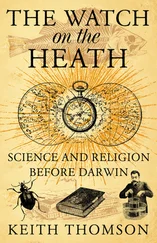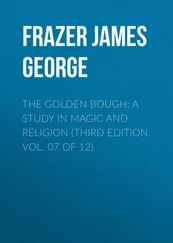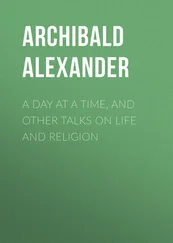Vikernes, Varg - Varg Vikernes - Sorcery and Religion in Ancient Scandinavia
Здесь есть возможность читать онлайн «Vikernes, Varg - Varg Vikernes - Sorcery and Religion in Ancient Scandinavia» весь текст электронной книги совершенно бесплатно (целиком полную версию без сокращений). В некоторых случаях можно слушать аудио, скачать через торрент в формате fb2 и присутствует краткое содержание. Жанр: Старинная литература, на английском языке. Описание произведения, (предисловие) а так же отзывы посетителей доступны на портале библиотеки ЛибКат.
- Название:Varg Vikernes - Sorcery and Religion in Ancient Scandinavia
- Автор:
- Жанр:
- Год:неизвестен
- ISBN:нет данных
- Рейтинг книги:3 / 5. Голосов: 1
-
Избранное:Добавить в избранное
- Отзывы:
-
Ваша оценка:
- 60
- 1
- 2
- 3
- 4
- 5
Varg Vikernes - Sorcery and Religion in Ancient Scandinavia: краткое содержание, описание и аннотация
Предлагаем к чтению аннотацию, описание, краткое содержание или предисловие (зависит от того, что написал сам автор книги «Varg Vikernes - Sorcery and Religion in Ancient Scandinavia»). Если вы не нашли необходимую информацию о книге — напишите в комментариях, мы постараемся отыскать её.
Varg Vikernes - Sorcery and Religion in Ancient Scandinavia — читать онлайн бесплатно полную книгу (весь текст) целиком
Ниже представлен текст книги, разбитый по страницам. Система сохранения места последней прочитанной страницы, позволяет с удобством читать онлайн бесплатно книгу «Varg Vikernes - Sorcery and Religion in Ancient Scandinavia», без необходимости каждый раз заново искать на чём Вы остановились. Поставьте закладку, и сможете в любой момент перейти на страницу, на которой закончили чтение.
Интервал:
Закладка:
Back home Ívarr's mother Elli (“old age”, “old days”) saw that he was bleeding, and thought that it would be better if he had stayed home and healed his wounds. Good health was important, she said. He had received the wounds in combat, and was happy he had. Elli went to the stone room, mixed mead and wine and brought it to the three waiting on the hayloft.
This song was not a song of vengeance in medieval Norway, but about Ívarr ("archer") Ellison; the archer was a son of the past. Ívarr was a capable man, who won the bride race, the dangerous ball game that was not for women. He was thus a chosen, a king/sorcerer. His father, Óðinn, was killed during Ragnarök and this Ívarr had to avenge. He got his weapons from the goddess of death, who in the song was his mother, waiting in the stone room (the grave). His father's belongings had been buried with him, and now Ívarr went in to the grave to collect them. He rode disguised as his father, with uncut hair and a bloodied shirt on – to prove to the guardians of the grave that he was dead and should be let in. Ívarr challenged Hermóðr and his men, who sat with the hair covering their faces, and rode out into the desolate woods, to Víðarr ( "forest"), where the battle was to take place. They cut down Hermóðr and the other berserks, who had their hair (bear hides and wolf furs) hanging down over their faces and therefore were blinded, like Höðr. They drank mead and wine, on The Day of Eldbjørg (“fire-rescue”), to celebrate that Ragnarök was over and that Óðinn's death had been avenged. The Sun would again get its strength back.
6.3 The Love of the Grave
The fairy tales are the longest surviving Pagan stories in Europe. In Christian times they were seen as “unchristian” and were therefore told in secret. Maids and servants often told these tales to children as bedtime stories, without their parents knowing about it. The most widely-known fairy tale is the one about Cinderella ("old ash"), that we know in various forms from almost all cultures across Eurasia.
Cinderella was marked from birth; her mother died when Cinderella was born. She was a sweet and hard-working girl who was badly treated by her step sisters and her stepmother. She slept in the ash (ashes?), and was therefore called Cinderella. When her father went away one day she asked if he could not bring back the first branch that fell down on his hat. He came back and gave her a branch from the hazel tree. She took it to her mother's grave, placed it on the grave and cried, watering the branch with her tears. It grew up and became a mighty bush. A pigeon sat down in the bush and told her that she could have three wishes granted.
When a ball was held in the king's palace everyone was invited, but Cinderella was not allowed by her stepmother to go. She begged and begged her for permission to go, and eventually the mother took a shovel with grain and poured it into the ash(es), and said that if Cinderella was able to pick up every grain in the course of two hours she would be allowed to go to the ball. Cinderella asked the pigeons for help and within an hour all the grains were back on the shovel. She was however still not allowed to go. She went to the pigeons again and asked them for a beautiful white dress with a veil for the face, and she went to the ball anyway. The prince at the ball did not pay any attention to Cinderella's sisters, and instead he danced with Cinderella all evening. The same thing happened the second day, and the third. The first two days the prince wanted to take her back home, but did not find her, but the third day she lost one of her shoes. The prince picked it up and went looking for her. When the prince came to the farm where Cinderella lived her step sisters cut their heals off, in an attempt to fit into the shoe, but they did not. Pigeons landed on the prince's shoulder and whispered to him that it was not them he was looking for. Finally the Prince found Cinderella and he kissed her.
This fairy tale naturally deals with the New Year and the Yule mystery. A sacred branch was used to open up the grave. This branch was Bölþorn, the dead Baldr. When it was watered by the tears of the goddess it grew up and became a mighty tree once again. We know the tears as Bölþorns daughter, Bestla ("the best liquid", "the best water"), who gave life to the gods. We know the same tears of the mound from both Völuspá and the song about Ívarr Ellison. In Völuspá, verse 33;
en Frigg um grét
í Fensölum.
but Frigg wept
in the fenced in hall.
In the song about Ívarr Ellison he turned to his mother when he rode through the castle gate, and said to her that she had to live well. She turned away in tears and was unable to answer him. Cinderella was the goddess who waited in the ancestral ashes and wept for Baldr. The fact that our forebears sometimes and in some places burned the dead to ashes did not change anything in the old religion; the ashes were scattered over or mixed with the soil, so that the dead would come back – like plants from a seed.
Cinderella wanted to go to the dance, but was not allowed to by her stepmother, who poured seeds into the ash(es). This may seem somewhat strange, but we know that in ancient Scandinavia they often placed a pot with seeds or pebbles (symbolizing seeds) next to the heads of the dead when they were placed in the grave. The reason for this was that they did not want malevolent spirits (trolls) to seize the bodies and turn the dead to undead creatures, who wandered around in the night and killed and drank blood from the living. Fortunately the trolls were really stupid, and could not count to more than three. Trolls were drawn to the life force, and also to the life force found in seeds. When seeds (or pebbles looking like seeds) were placed in a pot next to the heads of the dead the trolls would be too busy counting them to be able to possess the dead body. Whenever they counted three seeds/pebbles they had to start over again, and thus were kept busy for all eternity. This gave the dead the opportunity to rest in peace. Cinderella was not a troll, and could therefore easily overcome this obstacle, when she was to impersonate (and thus ”become”) the dead.
She dressed herself up to look like a corpse and went to the tomb, where she met and slept with the prince (sorcerer).
In the fairy tale she didn't sleep with, but instead danced with, the prince. However, dancing in pairs like they do in the fairy tale was originally a symbolic intercourse, where they found out if they got along well physically before they married, without actually having to sleep with each other to find out. So whether they dance or sleep together makes no difference; it symbolizes an intercourse. They dance (sleep together) because she has to teach the prince the secrets of love, for him to be able to know what to do when he marries his princess/queen. The kiss is the sharing of the spirit; the esoteric transfer of knowledge from one individual to another. This is also why we know the runes to be carved on Baldr's tongue.
We know that Cinderella is already a sorceress willing and ready to initiate the prince (after the third dance, when she knows he is worthy and when he has passed her test), because she tells him this by wearing only one shoe. The sorcerers and sorceresses did this and because of that walked with a limp, or they actually hurt their own foot (like Cindarella's step sisters did), to walk with a limp, because they had to in order to impersonate the spirit/god who kills the winter spirits in Ragnarök; Víðarr is known to kill Fenrir/Höðr by placing his foot inside the mouth of the beast and then tearing it to bits and pieces. When he does this he burns his foot, because the wolf breathes fire. Walking with a limp was in other words a proof you were in fact a sorcerer/sorceress and that you had passed the final initiation; by killing the winter spirits on Ragnarök.
Читать дальшеИнтервал:
Закладка:
Похожие книги на «Varg Vikernes - Sorcery and Religion in Ancient Scandinavia»
Представляем Вашему вниманию похожие книги на «Varg Vikernes - Sorcery and Religion in Ancient Scandinavia» списком для выбора. Мы отобрали схожую по названию и смыслу литературу в надежде предоставить читателям больше вариантов отыскать новые, интересные, ещё непрочитанные произведения.
Обсуждение, отзывы о книге «Varg Vikernes - Sorcery and Religion in Ancient Scandinavia» и просто собственные мнения читателей. Оставьте ваши комментарии, напишите, что Вы думаете о произведении, его смысле или главных героях. Укажите что конкретно понравилось, а что нет, и почему Вы так считаете.












